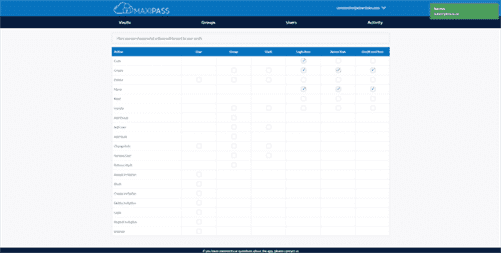Do we have such frameworks and what problems and limitations can we reach here? Before we move on to some high level constructs, so first of all, if your threads, either platform or virtual ones have a very deep stack. This is your typical Spring Boot application, or any other framework like Quarkus, or whatever, if you put a lot of different technologies like adding security, aspect oriented programming, your stack trace will be very deep. With platform threads, the size of the stack trace is actually fixed. In real life, what you will get normally is actually, for example, a very deep stack with a lot of data. If you suspend such a virtual thread, you do have to keep that memory that holds all these stack lines somewhere.
A thread supports the concurrent execution of instructions in modern high-level programming languages and operating systems. Each thread has a separate flow of execution, and multiple threads are used to execute different parts of a task simultaneously. Usually, it is the operating system’s job to schedule and manage threads depending on the performance of the CPU.
Fibers: Virtual threads in Java
Use of Virtual Threads clearly is not limited to the direct reduction of memory footprints or an increase in concurrency. The introduction of Virtual Threads also prompts a broader revisit of decisions made for a runtime when only Platform Threads were available. That’s our expectation from the platform is anyway, right?

I may be wrong, but as far as I understand, the whole Reactive/Event Loop thing, and Netty in particular, was invented as an answer to the C10K+ problem. It has obvious drawbacks, as all your code now becomes Async, with ugly callbacks, meaningless stack traces, and therefore hard to maintain and to reason about. I maintain some skepticism, as the research typically shows a poorly scaled system, which is transformed into a lock avoidance model, then shown to be better. I have yet to see one which unleashes some experienced developers to analyze the synchronization behavior of the system, transform it for scalability, then measure the result.
Java 17 Features: Pattern Matching for switch and Sealed Classes
If you have worked with Kotlin or Go Lang, you will notice that Virtual Threads are in deed very similar to Go routines or Kotlin coroutines. Some developers move to those languages because of those features, it seems Java is now providing the same in a backward compatible approach – For the Java Lovers, this is one more reason to continue using Java -. That’s why Project Loom started in 2017, and an initiative to provide lightweight threads that are not tied to OS threads but are managed by the JVM. A lot of changes and proposals from the first draft, but it seems to be ready in Java 21.
Imagine being alerted to any regression or code smell as you’re
running and debugging locally. Also, identifying weak spots that
need attending to, based on integration testing results. I built the security material as two full courses – Core and
OAuth, to get practical with these more complex scenarios.
Revision of Concurrency Utilities
And because these are light-weight threads, the context switch is way-cheaper, distinguishing itself from kernel-threads. Our team has been experimenting with Virtual Threads since they were called Fibers. Since then and still with the release of Java 19, a limitation java project loom was prevalent, leading to Platform Thread pinning, effectively reducing concurrency when using synchronized. The use of synchronized code blocks is not in of itself a problem; only when those blocks contain blocking code, generally speaking I/O operations.

We get the same behavior (and hence performance) as manually written asynchronous code, but instead avoiding the boiler-plate to do the same thing. What we potentially will get is performance similar to asynchronous, but with synchronous code. By using the ofVirtual() which returns a Builder instance to create step by step the desired thread.
Scripting in Java revised
And now you can perform a single task on a single virtual thread. The most used example for thread per workload pattern are certainly web servers that are listening for internet traffic and spanning a new thread for every separate request. I leave you with a few materials which I collected, more presentations and more articles that you might find interesting. Quite a few blog posts that explain the API a little bit more thoroughly. A few more critical or skeptic points of view, mainly around the fact that Project Loom won’t really change that much.

They undertook many of these in separate features where individual JDK components were reimplemented and put into JDK 13, 15, and 18. This had the extra benefit of not only making this mechanism Loom ready but it also cleared up a bunch of technical debt on some complete code. Virtual threads store their stack in a heap of memory in defined limited configurations form. This article will be more functional than technical, as it covers how this project looms coming into the picture. This week’s Java 20 release revised two Project Loom features that experts expect to have far-reaching effects on the performance of Java apps, should they become standard in September’s long-term support version. Like any ambitious new project, Loom is not without its challenges.
Tiny Scala Guide to Reading and Writing JSON using Circe
While an interesting read by itself (I personally liked the “taxi” metaphor a lot), I was skeptical how useful this solution could be. A few days ago Ron Pressler published article called “State of Loom”, which was endorsed by all the greatest people of JVM community, for all the good reasons. The Helidon Team prototyped a replacement using a loom and called it Wrap. JDK 19 is the second release of 2022 and the 11th release since Java switched to a semi-annual release cadence. JDK 19 will replace JDK 18, and JDK 20 will suppress it in March 2023. The next LTS release is JDK 21, due in September 2023.
- An example of a rare task that might not block is something that is CPU-bound like video-encoding/decoding, scientific data analysis, or some kind of intense number-crunching.
- It has obvious drawbacks, as all your code now becomes Async, with ugly callbacks, meaningless stack traces, and therefore hard to maintain and to reason about.
- To cater to these issues, the asynchronous non-blocking I/O were used.
- However, you just have to remember on the back of your head, that there is something special happening there, that there is a whole variety of threads that you don’t see, because they are suspended.
- Find centralized, trusted content and collaborate around the technologies you use most.
The core idea is that the system will be able to avoid allocating new stacks for continuations wherever possible. Project Loom is an attempt by the OpenJDK community to introduce a lightweight concurrency construct to Java. The prototypes for Loom so far have introduced a change in the JVM as well as the Java library.
Medium work (but easier than alternative) for Framework/tool providers
For us, the developers using those web-servers, there should be not change in the code, just take advantage of the new performance enhancements on them. Therefore definitely, virtual threads were lightweight than platform threads in memory, and also the virtual threads required less platform threads to work. You will see in a lot of places (included this article) that now, it’s possible to have millions of threads at the same moment with virtual threads, with minimum resource usage. Let’s look at some numbers collected from different articles that support that.
What Do Java Developers Think of the Rise of GenAI? – The New Stack
What Do Java Developers Think of the Rise of GenAI?.
Posted: Wed, 23 Aug 2023 07:00:00 GMT [source]





